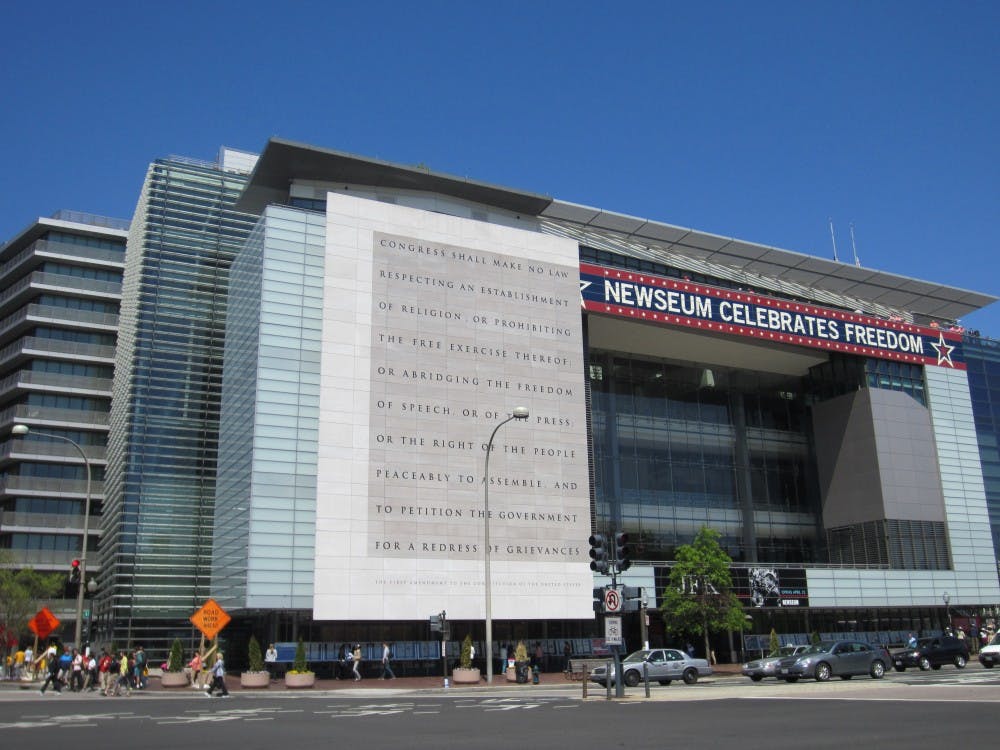The University announced its $372.5 million purchase of the Newseum building in Washington, D.C. on Friday.
The Newseum, located at 555 Pennsylvania Ave., is a museum dedicated to raising awareness about free speech and journalistic freedom. It is managed by the Freedom Forum, a nonprofit organization dedicated to the First Amendment.
According to a statement released by the Newseum on Friday, the Freedom Forum announced in August 2017 that the Newseum’s operating costs had become unsustainable. It then determined that selling the building would be the best possible solution.
Johns Hopkins Facilities and Real Estate (JHFRE) estimated that construction on the Newseum would begin in the fall of 2020, provided that regulatory government agencies approved the purchase. The Freedom Forum will continue operating the museum through 2019.
In the Freedom Forum’s statement, Chair and CEO Jan Neuharth asserted that the Newseum would assess its options to find a new location in the D.C. area after 2019.
“This was a difficult decision, but it was the responsible one,” Neuharth said. “We remain committed to continuing our programs — in a financially sustainable way — to champion the five freedoms of the First Amendment and to increase public awareness about the importance of a free and fair press.”
Following the Newseum’s 2017 announcement, the University began negotiations with the Freedom Forum to acquire the building.
University President Ronald J. Daniels explained in an interview with The News-Letter that Hopkins had been looking for an improved facility to strengthen its foothold in Washington, D.C for the past few years. He discussed the benefits of purchasing the Newseum building.
“First and foremost, it allows us to take what are a number of different programs and activities that are distributed across several different buildings and to consolidate them all in one space — realizing the promise of academic synergies that will come from bringing these programs together,” he said. “It gives us not just a co-located space but gives us a great space. This is an iconic building on a truly unique site.”
Currently, the University occupies three buildings in D.C., which it uses for activities conducted through the School of Advanced International Studies (SAIS), the Krieger School of Arts & Sciences and the School of Nursing, among other Hopkins institutions.
Daniels explained that because of significant maintenance issues and a lack of cohesiveness among the buildings, the University has decided to sell the three currently-owned buildings. This sale, he added, would help fund the Newseum renovation project.
“We’ve got a range of different philanthropists who have indicated that they will commit to the project. Mayor Bloomberg’s support is important, but we expect that there will be other sources of philanthropy,” he said. “The project will also be financed through various sources of institutional funds that we have been amassing in anticipation of doing some kind of a building project in Washington, either grouping the existing facility or moving to a new facility.”
According to Daniels, though the project will require significant funding and architectural design, it will provide extensive support for the University for years to come. He also pointed out that the budget and changes to the building’s interior will have to be effectively managed to meet the University’s projected deadline to open the building.
“There’s going to be a lot of work that will be necessary to repurpose the facility for academic use,” he said. “We want to be able to create new spaces for students and faculty to interact with one another.”
Though senior Séamus Ryan-Johnson was disappointed that the Newseum would be moving, he supported the University’s decision to purchase the building.
“The relocation of SAIS will allow easier access to Hopkins facilities for students that work on [Capitol] Hill during the daytime and attend classes in the evenings,” he wrote in an email to The News-Letter.
Senior Mika Inadomi wrote in an email to The News-Letter that though the project was expensive, she felt it was worth it.
“As an undergraduate, it’s hard to get a sense for what SAIS needs — like what their biggest weaknesses are and what resources they need to improve. But if they felt as though a space like this was necessary, I’m sure it will be worth it and I’m excited to see how it pans out,” she wrote.
Daniels explained that undergraduate students would also benefit from the acquisition of the Newseum. He said that the new building would expose students to internships, workshops and direct interaction with D.C. policymakers, particularly because of its close proximity to all three branches of the U.S. government.
“The flow of ideas, of personnel, of interactions back and forth between Baltimore and Washington will increase,” he said. “This is a moment in which the University becomes stronger, more relevant and more effectively keyed in to public policy issues that confront our country — both in domestic and foreign policy.”





